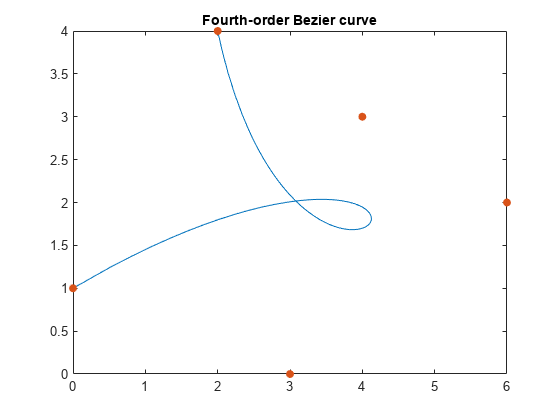bernsteinMatrix
Bernstein matrix
Syntax
Description
B = bernsteinMatrix(n,t)t is a vector, returns the
length(t)-by-(n+1) Bernstein matrix
B, such that B(i,k+1)=
nchoosek(n,k)*t(i)^k*(1-t(i))^(n-k). Here, the index
i runs from 1 to length(t), and the index
k runs from 0 to
n.
The Bernstein matrix is also called the Bezier matrix.
Use Bernstein matrices to construct Bezier curves:
bezierCurve = bernsteinMatrix(n, t)*P
n+1 rows of the matrix P specify the
control points of the Bezier curve. For example, to construct the second-order 3-D
Bezier curve, specify the control points
as:P = [p0x, p0y, p0z; p1x, p1y, p1z; p2x, p2y, p2z]
Examples
Input Arguments
Output Arguments
Version History
Introduced in R2013b


